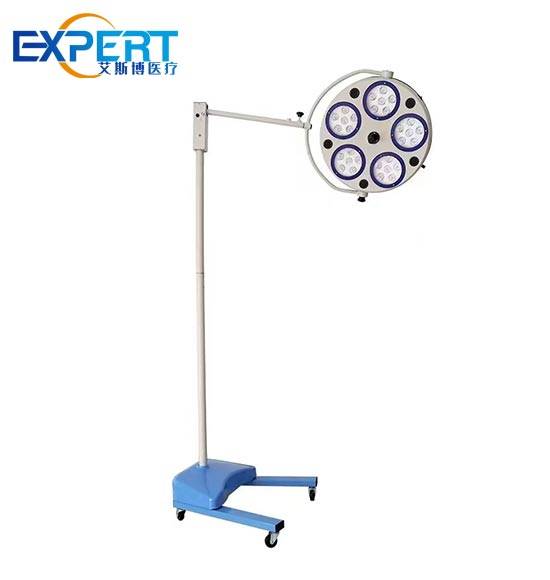Die Anschrift
304 Nordkardinal St.
Dorchester Center, MA 02124
Arbeitsstunden
Montag bis Freitag: 7:00 - 19:00
Wochenende: 10:00 - 17:00
In the intricate realm of surgical procedures, illumination plays a pivotal role in ensuring precision, clarity, and patient safety. Halogen surgical lights, with their intense, focused beams, have long been the cornerstone of surgical lighting, illuminating countless operating rooms worldwide.

Halogen surgical lights are more than just a source of light; they are a tool that enhances surgical outcomes by providing optimal visibility and minimizing shadows in the operating field.
The heart of a halogen light is the halogen bulb, which produces a bright, white light that closely resembles natural sunlight. Halogen bulbs are made from a tungsten filament sealed in a compact, airtight quartz capsule filled with a halogen gas.
High-quality reflectors and filters are used to direct and diffuse the light, ensuring that it is evenly distributed over the surgical site without causing glare or discomfort to the surgical team.
Because halogen bulbs generate a significant amount of heat, effective cooling systems are essential to prevent burns and to maintain the longevity of the bulb.
| Komponente | Funktion | Importance in Surgical Lighting |
|---|---|---|
| Halogen Bulb | Produces bright, white light | Hoch |
| Reflectors | Direct and diffuse light | Medium |
| Filters | Reduce glare and protect against harmful radiation | Medium |
| Kühlsysteme | Prevent overheating and extend bulb life | Hoch |









Halogen surgical lights are designed to provide intense, focused light on the surgical site. The intensity can often be adjusted to suit the needs of the procedure.
The design of halogen lights helps to minimize shadows, which can obstruct the surgeon’s view and hinder precision.
Surgical lights must be easily sterilized to maintain a sterile environment in the operating room.
Halogen surgical lights are often mounted on boom arms or rails that allow for easy positioning and movement around the operating table.
| Besonderheit | Beschreibung | Importance in Surgery |
|---|---|---|
| Intensity and Focus | Adjustable light intensity and focused beam | Hoch |
| Shadow Control | Minimizes shadows to improve visibility | Hoch |
| Sterilisierbarkeit | Easy to clean and sterilize to maintain a sterile environment | Hoch |
| Mobility and Positioning | Allows for easy movement and positioning around the operating table | Medium |
LED-OP-Leuchten
The advent of LED technology has led to the development of LED surgical lights, which offer many advantages over halogen lights, including lower heat generation, longer lifespan, and energy efficiency.
Digital Controls
Modern halogen surgical lights often feature digital controls that allow for precise adjustments to light intensity, color temperature, and other settings.
Integration mit chirurgischen Geräten
Some halogen surgical lights are designed to integrate with other surgical equipment, such as cameras and monitors, to provide a seamless surgical experience.

Regelmäßige Wartung
Regular maintenance, including cleaning and bulb replacement, is essential to ensure the optimal performance of halogen surgical lights.
Fehlerbehebung bei häufigen Problemen
Understanding common issues, such as flickering or dimming, and how to troubleshoot them can help to minimize downtime and maintain surgical efficiency.
Training for Surgical Staff
Proper training for surgical staff on the operation and maintenance of halogen surgical lights can help to prevent errors and ensure that the lights are used effectively.
Halogen surgical lights have been a critical component of the operating room for many years. Their ability to provide intense, focused, and adjustable light has greatly enhanced surgical precision and patient safety. As technology continues to advance, new innovations, such as LED lighting and digital controls, are further improving the functionality and efficiency of surgical lighting. However, the fundamental principles of providing optimal visibility and minimizing shadows remain at the core of surgical light design.
A halogen surgical light is a medical device that provides intense, focused, and adjustable illumination in the operating room to assist surgeons during surgery.
Halogen bulbs work by passing an electric current through a tungsten filament, which then heats up and emits light. The compact, airtight quartz capsule filled with halogen gas allows for higher filament temperatures and brighter, whiter light.
Halogen surgical lights offer several advantages, including intense and focused light, adjustable intensity, minimal shadows, and the ability to closely mimic natural sunlight, which is crucial for precise surgical procedures.
While halogen bulbs require regular maintenance, including periodic bulb replacement and cleaning, the process is generally straightforward and can be easily managed by trained surgical staff.
LED surgical lights offer several advantages over halogen lights, such as lower heat generation, longer bulb life, and energy efficiency. However, halogen lights are still widely used due to their bright, white light and established track record in the medical field.
